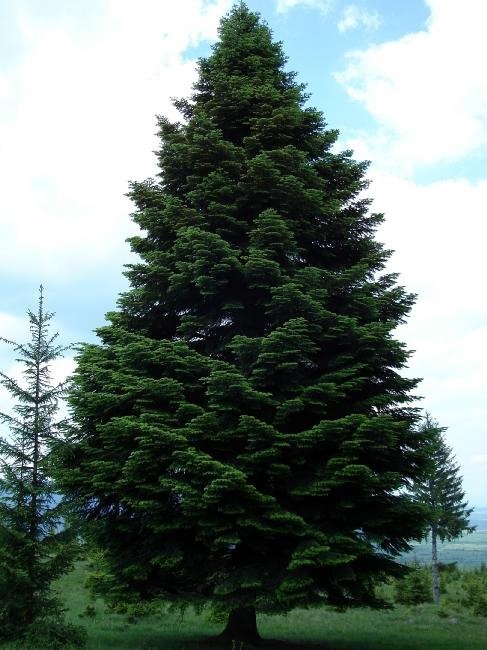The fir tree (Abies alba)
Description and morphological features
As an indigenous species, the Fir often reaches 40 m in height (almost as much as 2 buildings of 10 floors) and 1 m in trunk diameter – an adult can barely grasp it with his arms).
In the specialty literature, there are examples of fir trees from Mount Penteleu measuring 54 m.
The roots penetrate deep into the ground, which determines the high resistance facing the powerful winds of the winter.
The bark is gray-green smooth for a long time, with resin bags when young. The wood is soft with multiple usage: construction wood, furniture, cellulose, matches, resonance wood.
The leaves are 2-3 cm long, needle-like, linear-broad, shiny dark green on the front, with 2 whitish stripes on the back – a fact that helps to differentiate it from the spruce.
They are persistent, they last 6-15 years, and after drying they last a long time on the trees, which is why the fir is recommended as a Christmas tree.
It can live up to 800 years.


Biological and ecological requirements
The fir tree is one of the most sensitive species when it comes to natural conditions, being very demanding regarding humidity and sensitive to late frosts.
In Romania, the fir is the second most important conifer species, after the spruce, occupying 5% of the country’s forested area. It is well represented in the Eastern Carpathians, at altitudes between 400-1200 m, being found both in mixtures with beech and spruce or in pure forests.
Saplings cannot withstand drought, late frosts, excessive winter frosts, cold and dry wind, which imposes as a general rule that the regeneration of the fir is done only under the mountain massif; the saplings resist shading for up to 40-50 years, and subsequent exposure to light activates growth.
Fir’s preference is for shade, ranking 2nd after yew.

Economic, ecological and usage importance
The fir has a high-quality wood, but it is inferior to the spruce. The fir is a producer of tanning substances – especially resin with multiple uses in medicine and cosmetics.
The fir is a very good edaphic (soil) improver, both through its litter and through the ability of
the rooting system to „work” the soil.
And last but not least, the trees of this species constitute an element of resistance inside the groves (forests), in the way of the wind.
It can be planted alone, in groups or in rows in parks.
